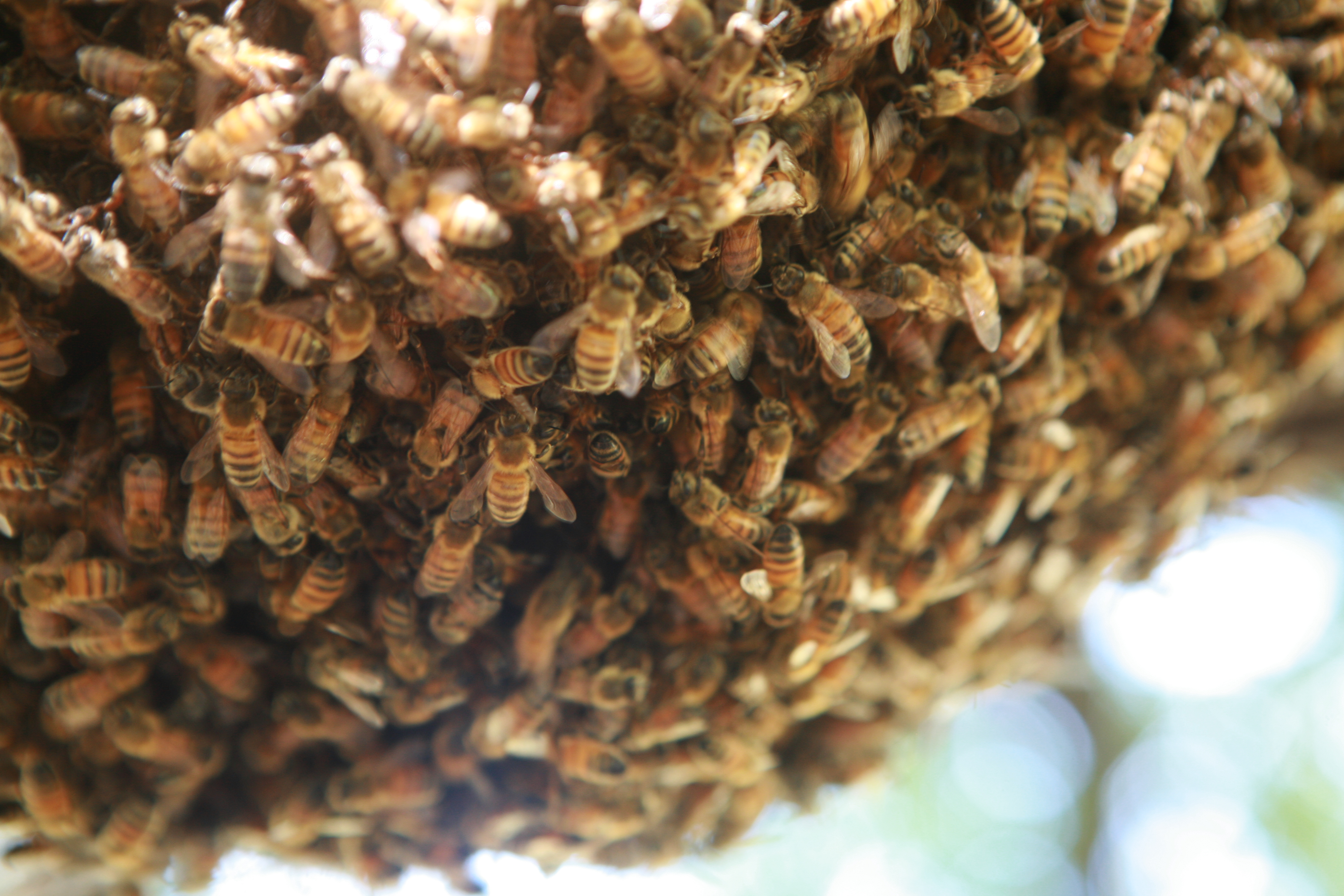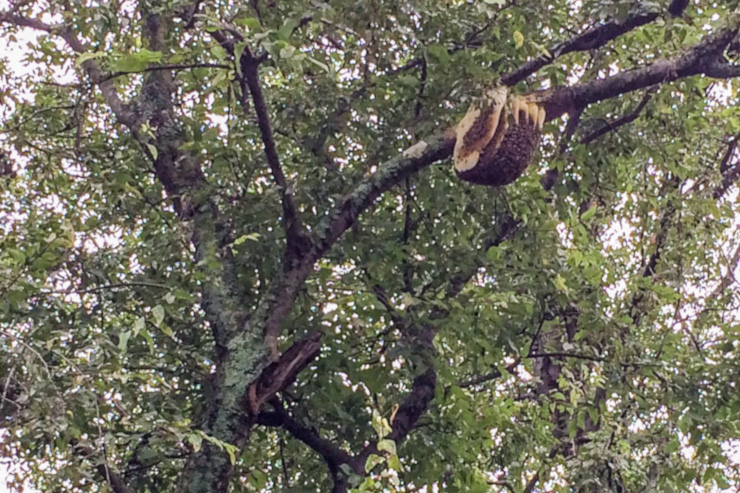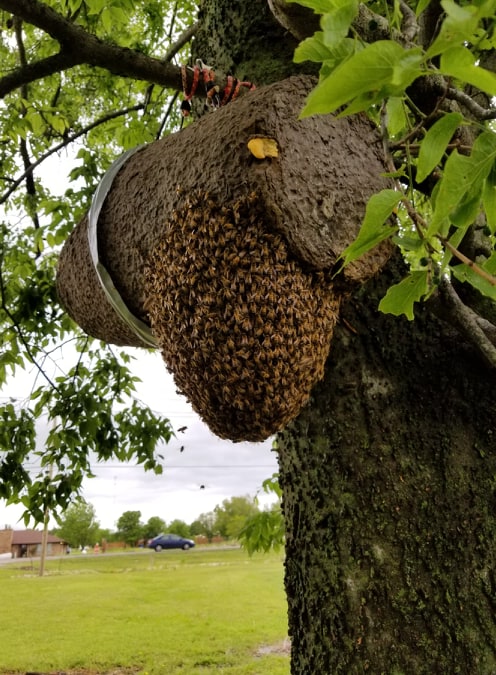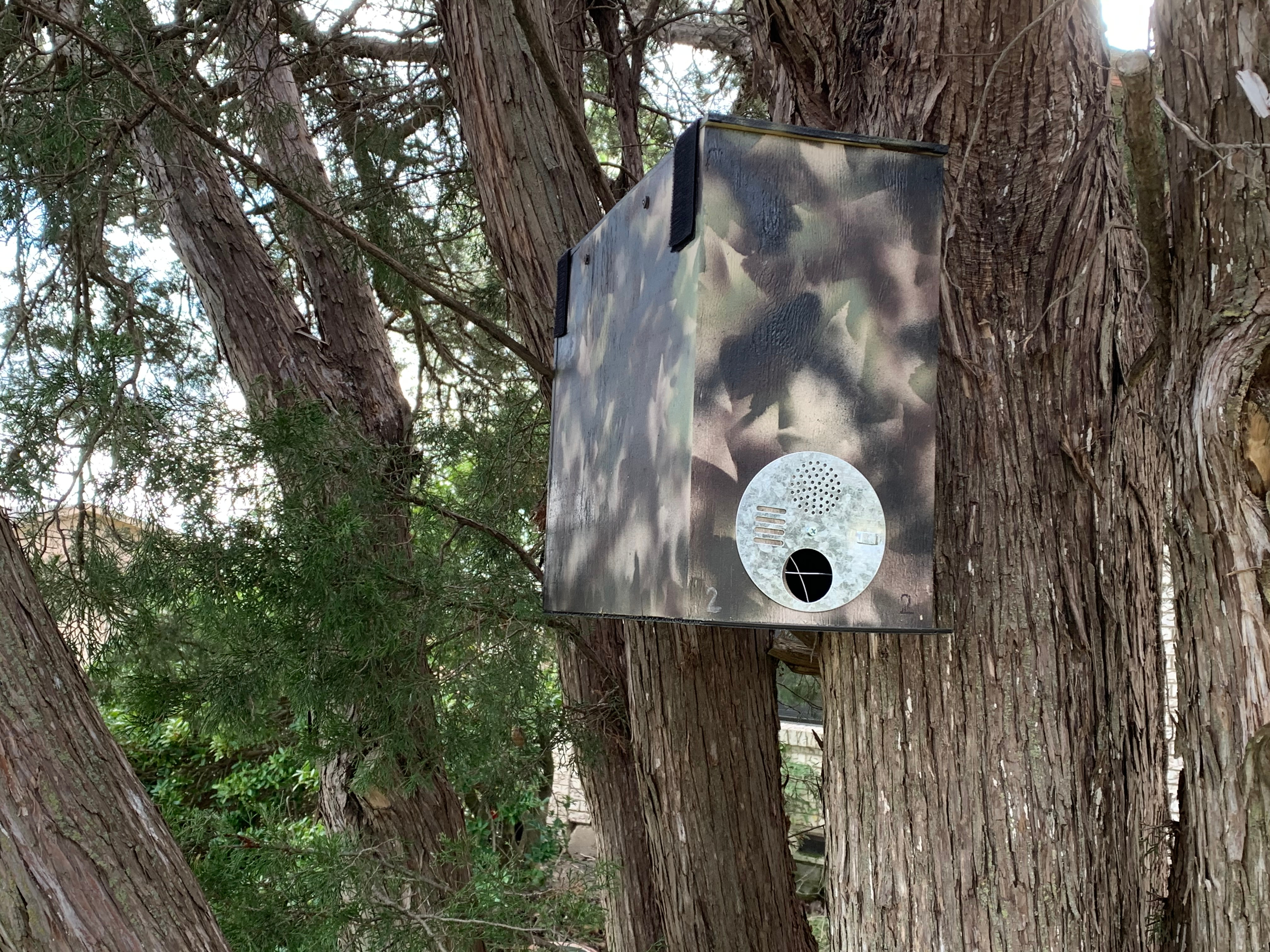
Even before we got into bees and beekeeping, I was intrigued with the thought of bee swarms and catching a honeybee swarm. It’s been said that swarm trapping bees is similar to fishing (a sport / hobby that I have greatly enjoyed). This notion; swarm trapping; was fueled by having seen an aerial hive show up in my own yard.
It was late fall, a few years ago and I was out by our chicken yard looking at a stand of Hackberry trees. I was thinking about the work it was going to take to get the undesirable trees removed and trying to talk myself into doing a bit of the work myself. I was sizing up the trees (which are actually taller than I would feel comfortable taking down myself) and while looking up at them, I spied something out of the ordinary. Up there, about 30' off the ground, was a growth - or at least that was my first thought. That growth turned out to be a beehive. There must have been a swarm that showed up and landed on one of those trees and they must not have found a suitable location to move into – so there they stayed (on the branch in our tree) building an aerial hive. By the time I found it, there were 6 or 7 good sized combs hanging down from the branch.

Try as I might (and I did try) to get those bees to come down from their aerial home, they chose to stay put. I built a Langstroth bee box, a feeder, and frames – but as an experienced beekeeper now, I know that was never going to work. Those bees left or died during the winter that year.
That situation got me researching and developing a plan to catch bee swarms going forward. The next year, I put up a swarm trap in that same tree and managed to catch multiple bee swarms (both a blessing and a curse – which I may expand on in another post later).
Here is a swarm trap that is in the same Hackberry trees as the swarm pictured above:

The past couple of years, we’ve used swarm traps that were made from fiber flowerpots. Those swarm traps been very successful; we’ve managed to catch about 40 swarms with them. They have some drawbacks, but I really can’t complain about them too much. One of the bigger issues with our design was that it utilized both deep frames as well medium frames – two of each. Invariably, the bees built comb on both types of frames, and occasionally, decided to hang out on the outside of the swarm trap. I made a video (flowerpot swarm), that shows how those flowerpot swarms traps work and how we move the bees out of them to a new hive. That said, we’re going to try a new style swarm trap this year.

The new swarm traps that I built over the last several weeks are based on the “Bushkill swarm trap” design. I’ve modified the plans to fit my particular needs, but the basic build is sound and should work (the proof will be in the pudding – so to speak). The new swarm traps hold 5 deep frames and utilize a “French cleat” to attach to trees. The idea for these swarm traps is to make them light weight, easy to close, and easy to collect and replace. The use of a single type of frame is also more conducive to my beekeeping and equipment.

As “Bee Season 2020” begins, it’s an exciting time. I was able to get a few of the new swarm traps set out this past weekend. I put a couple of them into my favorite “fishing” holes and baited them with my favorite “bait”. Now starts the waiting game. I can’t wait to see if the new traps will works as well as I hope. I’ll be putting out more traps in places where I’ve caught swarms before – as well as a few new locations. We’ll update you as the swarms start coming in and let you know how things are looking. Until then:
“Eat honey, for it is good…” Proverbs 24:13